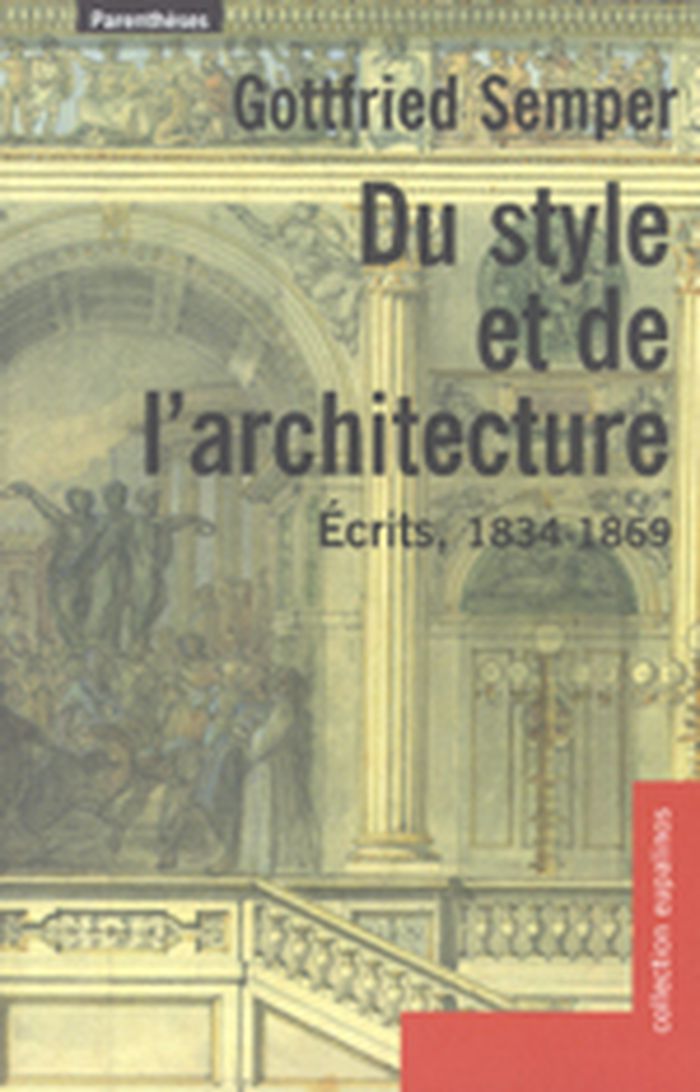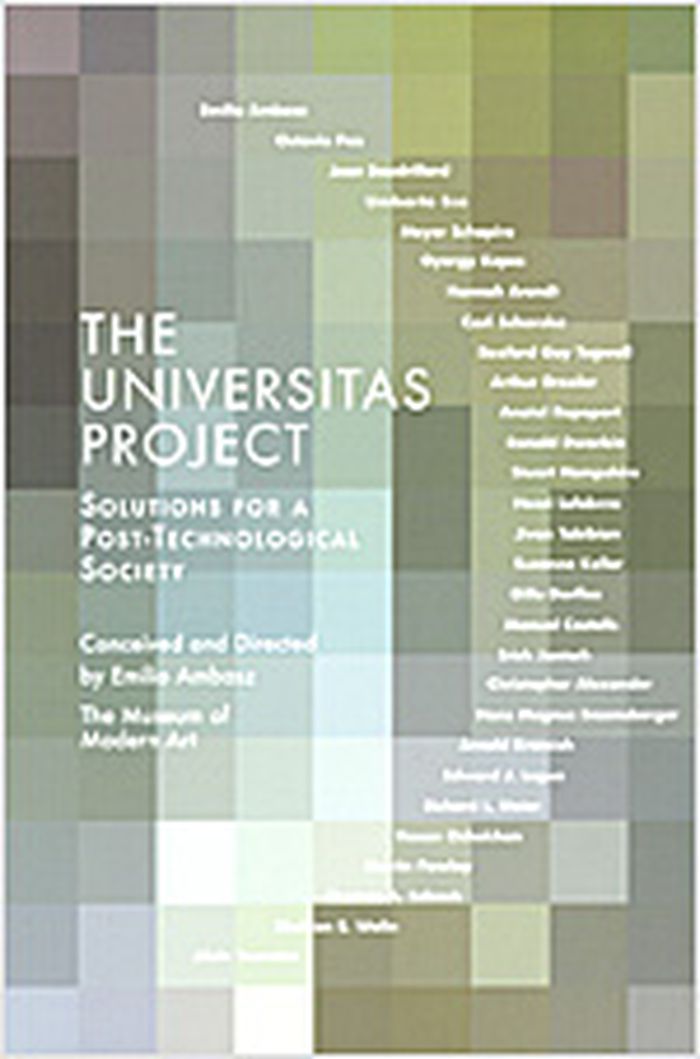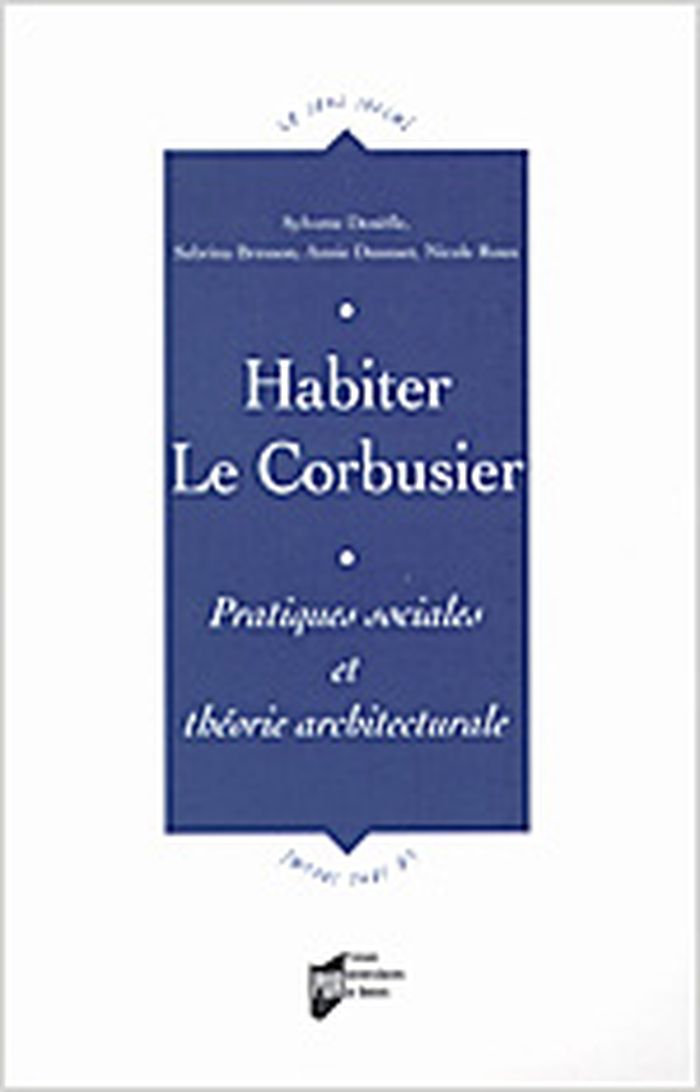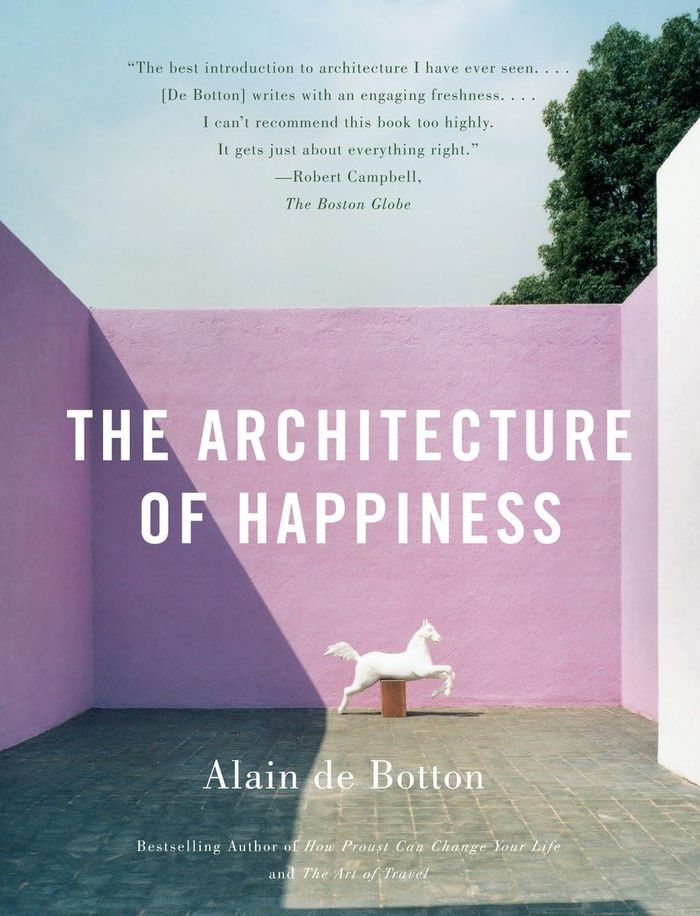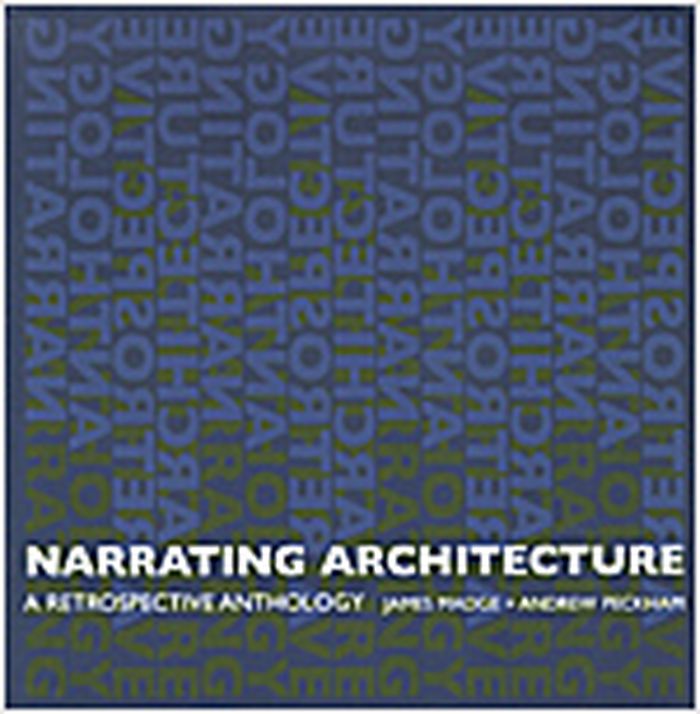$35.95
(disponible sur commande)
Résumé:
Il aura fallu attendre près de cent cinquante ans pour que paraissent en français les premières traductions de textes de celui qui est considéré comme le plus grand théoricien allemand de l'architecture du XIXe siècle et dont l'influence est encore clairement perceptible dans les références de jeunes architectes européens. Le présent ouvrage offre un large éventail de(...)
Du style et de l'architecture: écrits, 1834-1869
Actions:
Prix:
$35.95
(disponible sur commande)
Résumé:
Il aura fallu attendre près de cent cinquante ans pour que paraissent en français les premières traductions de textes de celui qui est considéré comme le plus grand théoricien allemand de l'architecture du XIXe siècle et dont l'influence est encore clairement perceptible dans les références de jeunes architectes européens. Le présent ouvrage offre un large éventail de textes de Gottfried Semper qui vont des Remarques préliminaires sur l'architecture peinte et la sculpture des Anciens écrit en 1834, où est débattue la question de la polychromie de l'architecture antique, jusqu'à la conférence de 1869 intitulée "Des styles architecturaux" où est exposée de manière très synthétique sa théorie de l'architecture comparée et de la notion de style confrontée à l'émergence de la nouvelle théorie de l'évolution dont il veut bien admettre les conclusions quant aux organismes mais pas quant à l'évolution des formes artistiques. D'importants extraits de Der Stil sont traduits ici et les principaux éléments de la théorie du style de Semper, les concepts clés de «revêtement», de «beauté formelle», de «type» et d'«élément», font l'objet de traitements plus spécifiques dans des textes aussi différents que Les Quatre éléments de l'architecture, De la détermination formelle de l'ornement, L'Art textile ou Des styles architecturaux, tous traduits intégralement. L'ensemble devrait permettre d'appréhender la richesse et la complexité d'une pensée singulière pour qui la forme artistique - du simple récipient au temple de dimension colossale - est conçue bien au-delà du seul «besoin», et se cristallise en ce point où se croisent des lois et forces physiques, des contraintes matérielles inhérentes à l'utilisation de tel matériau, enfin des idées et volontés qui caractérisent l'homme en tant qu'animal politique et religieux. C'est à l'appréhension de ce foyer cosmique au sein duquel interagissent le physique, le matériel, l'histoire et le politique, que s'intéresse Semper mobilisant en permanence un vaste ensemble de références scientifiques, esthétiques, littéraires ou historiques.
Théorie de l’architecture
$38.95
(disponible sur commande)
Résumé:
Conceived and directed by Emilio Ambasz. With essays by Jean Baudrillard, Manuel Castells, Gillo Dorfles, Ronald Dworkin, Umberto Eco, Erich Jantsch, Suzanne Keller, Gyorgy Kepes, Richard L. Meier, Martin Pawley, Octavio Paz, Anatol Rapoport, Meyer Schapiro, Carl Schorske and Jivan Tabibian, among others. With foreword by Terrance Riley. In January of 1972, The Museum(...)
The universitas project : solutions for a post-technological society
Actions:
Prix:
$38.95
(disponible sur commande)
Résumé:
Conceived and directed by Emilio Ambasz. With essays by Jean Baudrillard, Manuel Castells, Gillo Dorfles, Ronald Dworkin, Umberto Eco, Erich Jantsch, Suzanne Keller, Gyorgy Kepes, Richard L. Meier, Martin Pawley, Octavio Paz, Anatol Rapoport, Meyer Schapiro, Carl Schorske and Jivan Tabibian, among others. With foreword by Terrance Riley. In January of 1972, The Museum of Modern Art hosted "The universitas project," a two-day conference sponsored by the Museum’s International Council and the Institute for Architecture and Urban Studies. The participants, from a wide range of scholarly and artistic disciplines, engaged in a multidisciplinary debate on the future of design and design institutions in the postindustrial era. The project was originally described as "a critical and prospective inquiry into the relation of man to the natural and the sociocultural environment...specifically planned to explore the possibility of establishing in the United States a new type of institution centered around the task of evaluating and designing the man-made milieu." This volume publishes in their entirety the various components of the conference : the working papers that set the terms of the debate; the essays submitted by the invitees; the proceedings of the symposia responding to the papers; and the postscripts provided by the participants after the event.
Théorie de l’architecture
$34.99
(disponible sur commande)
Résumé:
Author Alain de Botton considers how our private homes and public edifices influence how we feel, and how we could build dwellings in which we would stand a better chance of happiness. In this look at how we shape, and are shaped by, our surroundings, Alain de Botton applies Stendhal’s motto that “Beauty is the promise of happiness” to the spaces we inhabit daily. Why(...)
The architecture of happiness
Actions:
Prix:
$34.99
(disponible sur commande)
Résumé:
Author Alain de Botton considers how our private homes and public edifices influence how we feel, and how we could build dwellings in which we would stand a better chance of happiness. In this look at how we shape, and are shaped by, our surroundings, Alain de Botton applies Stendhal’s motto that “Beauty is the promise of happiness” to the spaces we inhabit daily. Why should we pay attention to what architecture has to say to us? de Botton asks. de Botton traces how human needs and desires have been served by styles of architecture, from stately Classical to minimalist Modern, arguing that the stylistic choices of a society can represent both its cherished ideals and the qualities it desperately lacks. On an individual level, de Botton has deep sympathy for our need to see our selves reflected in our surroundings; he demonstrates how buildings — just like friends — can serve as guardians of our identity. Worrying about the shape of our sofa or the colour of our walls might seem self-indulgent, but de Botton considers the hopes and fears we have for our homes at a new level of depth and insight. When shopping for furniture or remodelling the kitchen, we don’t just consider functionality but also the major questions of aesthetics and the philosophy of art: What is beauty? Can beautiful surroundings make us good? Can beauty bring happiness? The buildings we find beautiful, de Botton concludes, are those that represent our ideas of a meaningful life.
Théorie de l’architecture
$30.95
(disponible sur commande)
Résumé:
Historiens, architectes, urbanistes ont contribué très largement à la connaissance de Charles-Edouard Jeanneret, dit Le Corbusier. Cependant le bilan social des réalisations de ce grand architecte n'a que très rarement fait l'objet d'une expertise sociologique. Comment vit-on dans l'architecture de Le Corbusier? Quelles implications ses conceptions urbanistiques ont-elles(...)
Théorie de l’architecture
septembre 2006, Rennes
Habiter le Corbusier : pratiques sociales et théorie architecturale
Actions:
Prix:
$30.95
(disponible sur commande)
Résumé:
Historiens, architectes, urbanistes ont contribué très largement à la connaissance de Charles-Edouard Jeanneret, dit Le Corbusier. Cependant le bilan social des réalisations de ce grand architecte n'a que très rarement fait l'objet d'une expertise sociologique. Comment vit-on dans l'architecture de Le Corbusier? Quelles implications ses conceptions urbanistiques ont-elles eues sur la vie des habitants? L'architecture moderne a-t-elle répondu à ses promesses ainsi qu'aux attentes de ses utilisateurs? Deux ans d'enquête auprès des habitants de la Maison Radieuse de René, une des cinq unités d'habitation de grandeur conforme réalisées par Le Corbusier, ont permis de confronter les conceptions de l'architecte à la réalité des pratiques habitantes. L'étude explore les modes de vie, les choix résidentiels, les aménagements, les sociabilités, les rapports à l'environnement paysager et urbain dans une perspective de comparaison avec les projets et les théories de Le Corbusier. Cette recherche met en évidence le rapport identitaire des habitants à la Maison Radieuse, voire à l'architecture et à -l'architecte; montre comment les grandes transformations sociales et économiques du XXe siècle rencontrent ce projet avant-gardiste; souligne les évolutions d'un habitat social stigmatisé comme tel et cependant classé au titre des Monuments Historiques.
Théorie de l’architecture
$22.95
(disponible en magasin)
Résumé:
Alain de Botton considers how our private homes and public edifices influence how we feel, and how we could build dwellings in which we would stand a better chance of happiness. In this look at how we shape, and are shaped by, our surroundings, Alain de Botton applies Stendhal’s motto that "Beauty is the promise of happiness" to the spaces we inhabit daily. Why should we(...)
The architecture of happiness
Actions:
Prix:
$22.95
(disponible en magasin)
Résumé:
Alain de Botton considers how our private homes and public edifices influence how we feel, and how we could build dwellings in which we would stand a better chance of happiness. In this look at how we shape, and are shaped by, our surroundings, Alain de Botton applies Stendhal’s motto that "Beauty is the promise of happiness" to the spaces we inhabit daily. Why should we pay attention to what architecture has to say to us? de Botton asks. With his trademark lucidity and humour, de Botton traces how human needs and desires have been served by styles of architecture, from stately Classical to minimalist Modern, arguing that the stylistic choices of a society can represent both its cherished ideals and the qualities it desperately lacks. On an individual level, de Botton has deep sympathy for our need to see our selves reflected in our surroundings; he demonstrates with great wisdom how buildings — just like friends — can serve as guardians of our identity.
Théorie de l’architecture
livres
Notes for those beginning the discipline of architecture alternate ending 1 : the glimmering noise
$22.95
(disponible sur commande)
Résumé:
Michael Meredith hits hard with his first publication in the form of a Manifesto on architecture but the theme crosses into all design related professions.
Notes for those beginning the discipline of architecture alternate ending 1 : the glimmering noise
Actions:
Prix:
$22.95
(disponible sur commande)
Résumé:
Michael Meredith hits hard with his first publication in the form of a Manifesto on architecture but the theme crosses into all design related professions.
livres
janvier 2007
Théorie de l’architecture
livres
$37.95
(disponible sur commande)
Résumé:
Cet ouvrage propose quatorze portraits et réflexions sur des architectes de renom que l'auteur a eu le privilège de rencontrer et de côtoyer. Mêlant les réflexions générales sur leurs œuvres à ses souvenirs et impressions personnelles, il offre un livre à la fois savant et vivant, construit et habité, qui restitue les débats, visions et réalisations des années 1952 à 2005.
Réfléchissements : rencontres d'architectes
Actions:
Prix:
$37.95
(disponible sur commande)
Résumé:
Cet ouvrage propose quatorze portraits et réflexions sur des architectes de renom que l'auteur a eu le privilège de rencontrer et de côtoyer. Mêlant les réflexions générales sur leurs œuvres à ses souvenirs et impressions personnelles, il offre un livre à la fois savant et vivant, construit et habité, qui restitue les débats, visions et réalisations des années 1952 à 2005.
livres
novembre 2006, Gollion
Théorie de l’architecture
livres
$54.95
(disponible en magasin)
Résumé:
Cet ouvrage exauce enfin le vœu de Le Corbusier de voir éditées les six conférences qu'il prononça à Rio de Janeiro en août 1936. Après les dix conférences de Buenos Aires, en 1929, publiées dans Précisions sur un état présent de l'architecture et de l'urbanisme (1930), cet inédit est le deuxième recueil de conférences de l'architecte. Et, comme ce fut le cas à Alger,(...)
Le Corbusier : conférences de Rio - 1936
Actions:
Prix:
$54.95
(disponible en magasin)
Résumé:
Cet ouvrage exauce enfin le vœu de Le Corbusier de voir éditées les six conférences qu'il prononça à Rio de Janeiro en août 1936. Après les dix conférences de Buenos Aires, en 1929, publiées dans Précisions sur un état présent de l'architecture et de l'urbanisme (1930), cet inédit est le deuxième recueil de conférences de l'architecte. Et, comme ce fut le cas à Alger, Moscou, Bruxelles, Athènes, Paris, Stockholm, Rome, Buenos Aires, São Paulo ou Montevideo, ces conférences jouèrent un rôle central dans la propagation de ses idées sur l'architecture et l'urbanisme. L'importance de ce recueil tient au fait qu'il permet de mesurer le chemin parcouru par Le Corbusier entre 1929 et 1936, l'évolution de sa " technique " de conférencier - comme il la nomme - et celle de ses idées au cours de ces années particulièrement critiques pour l'Europe et pour le monde. Enfin, à travers les propos transcrits, la reproduction des dessins et des projections, on peut non seulement suivre la manière dont Le Corbusier transmettait son message, mais aussi reconstituer le temps et le rythme des conférences, les commentaires qu'il improvisait en restituent l'ambiance et les moments d'intensité.
livres
septembre 2006, Paris
Théorie de l’architecture
$59.95
(disponible sur commande)
Résumé:
This anthology brings together the best papers from the first ten years of "The Journal of Architecture", published together for the first time in a single volume. Covering a wide range of topics of central importance to architecture today, the papers also address the related topics to which architecture and architectural studies are inextricably linked. The invited(...)
Théorie de l’architecture
août 2006, London, New York
Narrating architecture : a retrospective anthology
Actions:
Prix:
$59.95
(disponible sur commande)
Résumé:
This anthology brings together the best papers from the first ten years of "The Journal of Architecture", published together for the first time in a single volume. Covering a wide range of topics of central importance to architecture today, the papers also address the related topics to which architecture and architectural studies are inextricably linked. The invited authors draw on sociology, philosophy, cultural studies and the sciences to round out the collection and highlight the breadth and vitality of modern architectural studies, offering perspectives from different disciplines as well as different corners of the globe.
Théorie de l’architecture
livres
Cartographic cinema
$31.50
(disponible sur commande)
Résumé:
Cartography and cinema are what might be called locational machinery. Maps and movies tell their viewers where they are situated, what they are doing, and, to a strong degree, who they are. In this work,scholar Tom Conley establishes the ideological power of maps in classic, contemporary, and avant-garde cinema to shape the imaginary and mediated relations we hold with(...)
Cartographic cinema
Actions:
Prix:
$31.50
(disponible sur commande)
Résumé:
Cartography and cinema are what might be called locational machinery. Maps and movies tell their viewers where they are situated, what they are doing, and, to a strong degree, who they are. In this work,scholar Tom Conley establishes the ideological power of maps in classic, contemporary, and avant-garde cinema to shape the imaginary and mediated relations we hold with the world. "Cartographic cinema" examines the affinities of maps and movies through comparative theory and close analysis of films from the silent era to the French New Wave to Hollywood blockbusters. In doing so, Conley reveals that most of the movies we see contain maps of various kinds and almost invariably constitute a projective apparatus similar to cartography. In addition, he demonstrates that spatial signs in film foster a critical relation with the prevailing narrative and mimetic registers of cinema. Conley convincingly argues that the very act of watching films, and cinema itself, is actually a form of cartography. Unlike its function in an atlas, a map in a movie often causes the spectator to entertain broader questions—not only about cinema but also of the nature of space and being.
livres
décembre 2006, Minneapolis, London
Théorie de l’architecture
